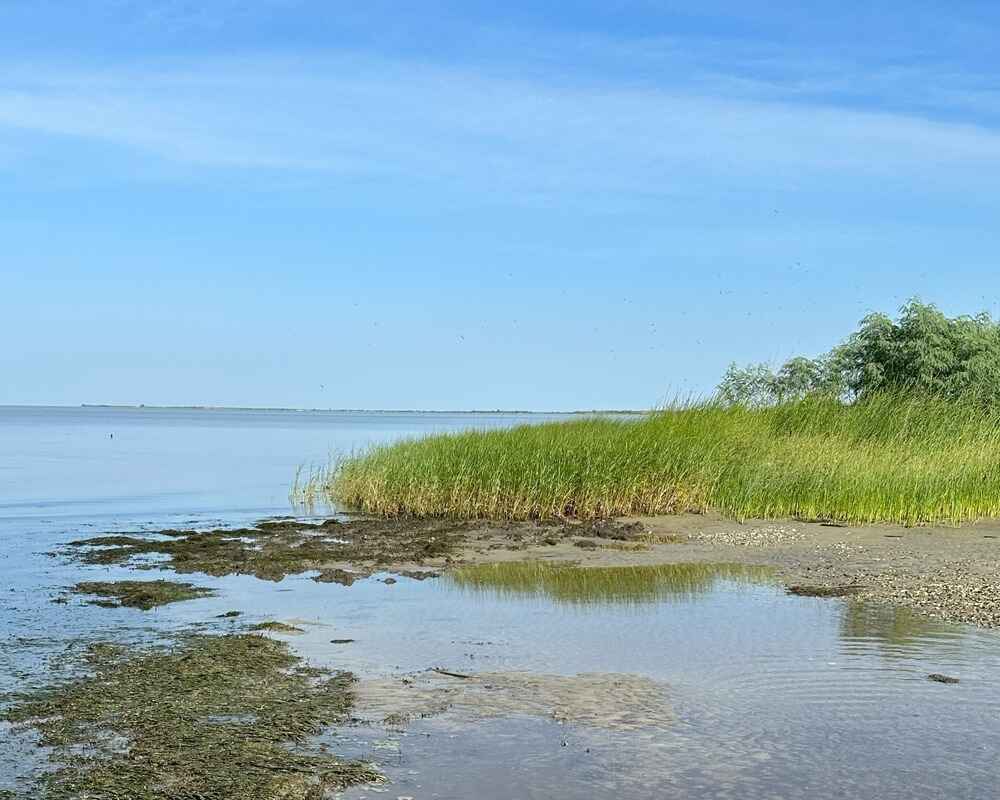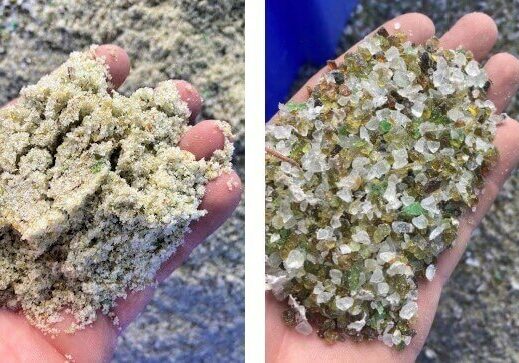Why is Crushed Glass the Sustainable Solution to
Coastal Wetland Erosion?

cost effective replacement
for scarce global sand supply

millions of tons
of glass recycled yearly

added protection
from natural disasters and hurricanes

THE PROBLEM
Several Meters of Protective Coastline are Lost Each Year
There are numerous factors that contribute to coastline erosion. Ultimately, the loss of a protective coastline has severe consequences for coastal communities. As the shoreline recedes, infrastructure such as homes, roads, and businesses becomes increasingly vulnerable to the encroaching sea. In addition, the erosion of protective coastlines can result in the degradation of vital habitats for marine life, disrupting ecosystems and threatening biodiversity.


THE PROBLEM
The Global Supply of Coarse, Angular Sand Is Scarce
Sand is the second-most used resource on Earth, after water. The demand for construction sand, particularly coarse sand with angular particles, has been increasing due to rapid urbanization, infrastructure development, and construction activities worldwide. The over-extraction and depletion of natural sand resources are leading to environmental degradation and ecological imbalances. At its current rate of growth, sand extraction is simply unsustainable.
Millions of Tons of Glass Waste End up In our landfills every year
Despite recycling initiatives in many communities across the United States, only about 31% of all glass waste is recycled each year. That means millions of tons of otherwise recyclable glass ends up in landfills. With concerted effort to improve the glass recycling rate across the country, there could be a significantly larger supply of glass waste which can be repurposed to help the environment in the form of glass sand.

THE SOLUTION
Recycled Glass to Replenish Sand and Restore Coastlines, Wetlands and Marshes
Glass began as sand and can easily be pulverized into clean sand and aggregate. Highly durable and non-biodegradable, glass can persist in the environment for hundreds or even thousands of years. This makes it a perfect solution to replenish natural sand. Once glass waste has been collected, processed, and pulverized into sand, then it is ready to be used for coastal restoration. The process begins by bagging, layering, and planting glass sand aggregate. The bags biodegrade within 6 months and allow for natural grass to regrow, thereby aiding the restoration of coastlines, wetlands, and marshes.
A long-term, sustainable alternative to dredging and mining
Dredging and mining to gather sand is a very invasive technique that costs millions of dollars annually to maintain. Using glass sand in place of natural sand helps to solve these problems. Recycled glass has a myriad of uses and efficient glass recycling should be in every community’s comprehensive waste management program. Recycling glass diverts it from community landfills and incinerators, reducing strain on local waste management systems and the environment.

A SUCCESS STORY
Glass Half Full Rehabilitiated Louisiana’s Disappearing Coastline Using Crushed Glass
Louisiana has lost a quarter of its wetlands since the 1930s because of flood control structures designed to protect communities and businesses from flooding. Glass Half Full aimed to solve this problem.
How did they do it? First, they raised money to buy an Andela Glass Pulverizing System, then they created a glass collection program in New Orleans to build a mountain of glass waste. Networking and partnering with local universities helped them find the most beneficial uses for glass sand and aggregate. They identified wetland restoration as a major opportunity, so they partnered with Recoast who helped with data gathering to determine which wetlands would benefit the most from glass sand restoration. With the locations selected and local permits secured, they gathered a team of volunteers and 100,000 pounds of glass waste were reused, 8,000 native bulrush plugs were planted, 35+ volunteers helped to support this initiative.
Video Credit: Glass Half Full/Crista Rock
100k lbs
glass waste were
reused
8k
native bulrush plugs planted
35+ volunteers
helped to support
this initiative
100k lbs
glass waste were
reused
8k
native bulrush plugs planted
35+ volunteers
helped to support
this initiative
Why should I invest in a glass crushing machine?
- The demand and popularity for crushed glass is rising
- These machines are easy to use
- The versatility of the end-uses makes them a worthwhile investment
- Environmental protection and restoration
Additional Information
- Recycled Glass, Turned into Sand, Is Restoring Louisiana’s Coastline
- Tulane scientists and engineers to use recycled glass ‘sand’ to prevent coastal erosion
- Glass Half Full’s fight against coastal erosion
- Restoring Coastlines and Wetlands Using Recycled Glass
- Glass to grass: Can crushed glass help restore Cayman’s coastal environment?
- A new initiative to turn glass bottles from New Orleans’ many drinking spots into tiny particles of sand has raised hopes. Can recycled glass help restore Louisiana’s eroding coastline? | US news | The Guardian
- Eastons beach future looks washed out. Pulverized glass could help fill the gap
- Glass Half Full recycling effort
The Future of Sand is Glass Aggregate. Get In On The Action.
Andela’s innovative glass recycling systems create end-use products that can help with coastal and marshland restoration. We will help you find the perfect system for your specific needs.
Frequently Asked Questions
Crushed Glass and Glass Aggregate Serve A Variety of Other Applications in Construction, Gardening, Community Projects and More.
Wondering about the other uses for glass sand aggregate?
Glass sand aggregate has many uses for individuals and businesses. With no sharp edges, it is easily handled and appropriate for even the most delicate applications such as play sand for children. Glass aggregate can be produced in different sizes and gradations as needed.
| • Coastal Restoration • Mulch • Glass Based Soil • Hydroponics • Play Sand • Glass and Plastic Pavers |
• Rain Gardens • Pipe Bedding • Polished Concrete • Formed Polymer Concrete • Pavement Concrete Blocks |
• Coastal Restoration
• Mulch
• Glass Based Soil
• Hydroponics
• Play Sand
• Glass and Plastic Pavers• Rain Gardens
• Pipe Bedding
• Polished Concrete
• Formed Polymer Concrete
• Pavement Concrete Blocks

